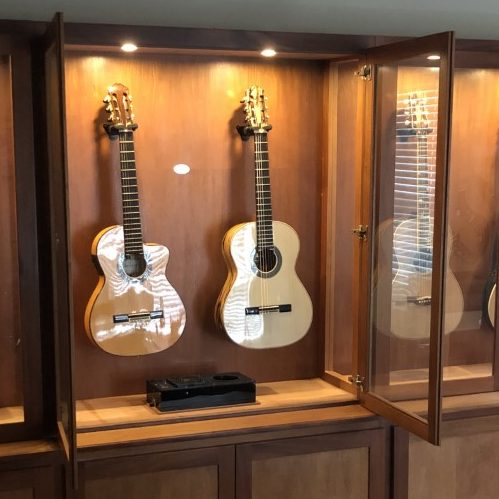Why Vintage Wines Are Expensive–A Timeline
In popular culture, dreams of living the good life often include many luxuries, including a cellar stocked full of vintage wines. Vintage wines have a well-deserved reputation for delighting connoisseurs’ palates, as well as the reputation of being more expensive than non-vintage bottles.
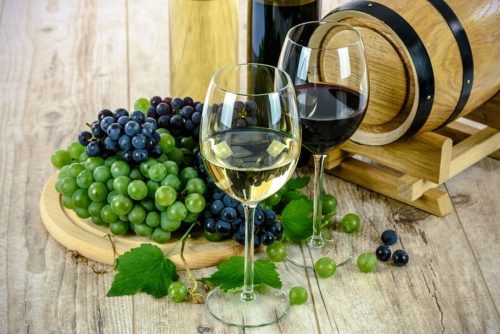
If you’re wondering whether you can justify the sometimes considerably higher prices, the short answer is yes.
The longer answer invites an exploration of the fascinating journey of a vintage wine; from grapes harvested in a vineyard, to a shelf at a merchant or liquor store. Read on for why there’s no comparison between a bottle of Two Buck Chuck or a Chateau Petrus vintage from any year.
What Are Vintage Wines?
We often imagine our dream wine cellar being stocked with vintage wines, decades-old bottles covered with dust and cobwebs. While those dusty cellars undoubtedly exist, not all vintage wines are old. In fact, some can be as little as two years old.
Rather than meaning ‘old’ or ‘aged,’ the term ‘vintage’ refers to wine made exclusively from grapes harvested in the same year—the year that you’ll see on the label. If the year is absent from a label, it means the wine is from grapes harvested in different years, or it’s made by blending wines produced in different years.
Let’s take a closer look at what sets vintage wines apart from the rest.
Prices Begin In Vineyards
It’s not oversimplifying to say the better the vineyard, the better the wine. Of course, several factors contribute to a vineyard’s production value: the local climate, the topography, and the soil composition. The best vineyards:
- Are on hilly ground
- Have soil that is poor in nutrients
- Are in climates that are neither too arid nor too tropical
- See farmers thin crops to produce smaller quantities of bigger, juicier, more flavorful grapes
While vineyards on flat ground with rich soil near the ocean, lakes, or dams will produce suitable grapes for winemaking, those grapes won’t match the quality of those grown in ideal locations.
You need only look at some of the most famous winelands in the U.S. to find a great example of how grape prices vary.
A ton of Cabernet Sauvignon grapes grown in California’s Central Coast might sell for $1,800, while a ton of grapes grown in Napa Valley might sell for $7,000. If grapes were grown in Oakville’s To-Kalon vineyard, they might sell for a whopping $25,000 per ton.
Besides indicating the year of harvest, most vintage wine labels name the region or subregion where the grapes were grown. In some regions, grape farming and wine production are strictly controlled by various time-honored rules and regulations. This can add even more to the price of the grapes and the wines they’re used to produce.
Harvesting and Price
The higher prices of some vintage wines may be due in part to the way the grapes get harvested in those acclaimed vineyards. In large-scale vineyards located on level ground harvesting is usually done by machine.
When that happens, bad bunches of grapes, insects, vine twigs, tendrils, and all sorts of other bits get harvested along with the good bunches. The wineries usually sort the good grapes from the not-so-good, , but you can be almost sure that some of the bad ones end up in the winepress as well. Unsurprisingly, those grapes tend to make cheap and cheerful table wines.
In smaller vineyards on hilly ground, however, harvesting is usually done by hand. It’s more labor intensive and time-consuming, but it means that the laborers check every bunch. They harvest only the good grapes, and leave the unripe or spoiled fruit, as well as all the undesirable bits. With that sort of care put into the harvest, you can expect to pay a little more for wines produced from those grapes.
Aged in Oak Barrels
When aging cheaper mass-produced wine, it’s usually placed in concrete or stainless-steel vats with oak chips that impart the flavors that are an integral part of those wines.
When it comes to vintage wines, wineries that are serious about producing a great product age their wine in barrels made from American, French, or Hungarian oak. Far more expensive than oak chips, the barrels get replaced after three vintages age in them, as all the sought-after flavors draw out of the wood by the time the third vintage’s barrel aging is complete. The price of barrels depends on the origin of the oak. For example:
- American oak barrels cost between $360 and $800 each
- French oak barrels cost between $850 and $4,000 each
- Hungarian oak barrels cost between $560 and $700 each
There’s no doubt that oak chips add something special to mass-produced wine, but they are no replacement for proper barrel aging. When red wines age in oak, the wood imparts flavors such as vanilla, nutmeg, mocha, and almond. White wines aged in oak develop flavors such as caramel, dried fruit, and marzipan.
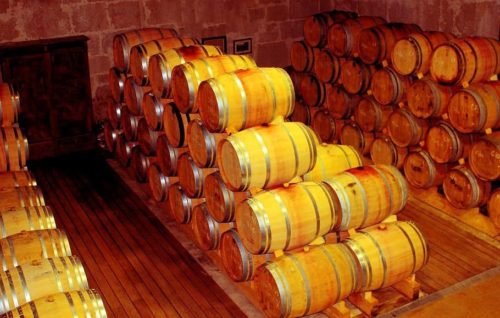

The Price of Bottle Aging
After being barrel aged, the next stage on the vintage wine timeline is bottle aging.
The wine is then transferred from barrels to bottles and stored on racks in a cellar. It’s a process that requires time and space, and pushes the prices higher, especially if the government taxes the winemakers several times during the process, as happens in Australia.
Bottle aging is important to the process because it:
- Softens the acidity and the tannins
- Balances the body, flavors, and aromas of the wine
Some cheap vintage wines and most blends are not bottle aged for long before they’re up for sale. It’s because those wines are fine to drink fresh, and not due to lack of space or effort on the part of the winemaker. Their quality would worsen, not improve, if they’re bottle aged for too long, whether at the winery or in your home bar or cellar.
The Price of Packaging
Packaging – meaning bottles, corks, and labels, is another factor included in the higher prices of many vintage wines. If you compare the bottles of better wines with the cheap and cheerful stuff, you’ll find that the former is in bottles made of thicker glass.
Some vintage wine bottles may be of a slightly different design, or they may feature a molded logo or another element. The more expensive wines tend to have a real cork seal, and they usually have labels made from good quality paper. Some wineries even get well-known artists and designers to design their labels, which can increase the collectability and the prices of those bottles.
When it comes to mass-produced quaffing wines, they’re usually bottled in thin, mass-produced bottles that have a standard design. The labels are usually made of cheaper paper, and the bottles sealed with synthetic corks or screw-tops, which help keep the prices low.
Vintage Wines Are Limited Edition
The pricier vintage wines usually result from small-scale production. The best vineyards have size limitations, and thanks to crop thinning, they yield a significantly smaller harvest of grapes.
The winemaking process that follows the harvest at smaller wineries is costlier and more labor-intensive, resulting in a smaller output compared to large-scale wineries that produce a cheaper product. Where a small-scale winery may produce 50,000 cases or fewer of a particular wine in one year, a large winery may produce at least 10 million cases of wine in a year.
Take the Domaine de la Romanée-Conti estate in Burgundy, France. It produces between 6,000 and 8,000 cases of wine per year. However, each bottle sells for approximately $10,000 or more. By comparison, Trader Joe’s sells an estimated 5 million cases of Two Buck Chuck annually.
With that in mind, think of these wines as hard to find or limited editions, with terroirs that perfectly express the influence of the vineyard’s location on the grapes used to make them. As winemakers in the U.S., France, Italy, South Africa, and the world’s other great wine making countries can attest, no two years are the same.
Whether you consider subtle changes in soil composition, more dramatic changes in climate, harvesting methods, or other factors, every season brings something new. Small-scale winemakers take those factors into account and put time and effort into creating the best wines they can with that year’s grapes. The results are vintage wines that have flavors, aromas, and nuances that mass-produced wines cannot match.
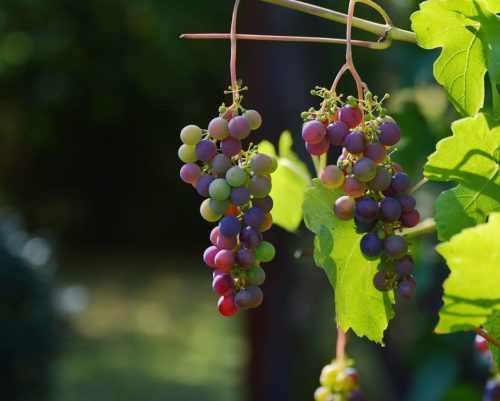

Vintage Isn’t the Be-All And End-All
There’s no denying that vintage wines have their good points. There’s something special about savoring the unique character of a particular vineyard or location, as expressed in a wine produced from grapes harvested in a single location during one season.
However, as you may have discovered already, some years simply aren’t good years for grapes. As a result, the vintage wines produced from grapes grown in a bad year might not be as good as some of the less expensive blends produced by blending wines made in different years.
A vintage is not a guarantee of a good wine. If you’re unsure about a wine you’re thinking about purchasing, don’t hesitate to ask a reputable merchant for advice.
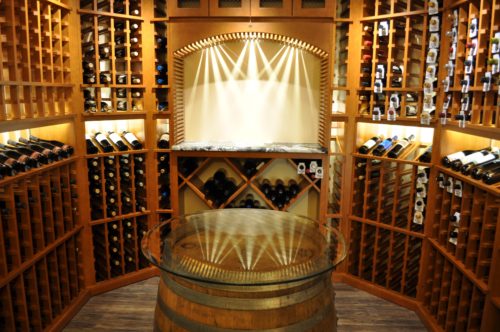

Looking for high-quality and handcrafted wine storage needs? Consider Vigilant’s commitment to quality (and budget) with our standard kit and custom wine rack products. Imagine the growth of your wine collection by using our free DIY Wine Cellar Tool, or contact Vigilant for a custom quote!
Author Bio: Chloe McCoy is a gastronome by day and a foodie content writer by night. While covering articles about the food, beverage, and restaurant industry, she’ll have a plate of snacks to munch on beside her. During her free time, Chloe enjoys going to wine tasting events with her best friend.

